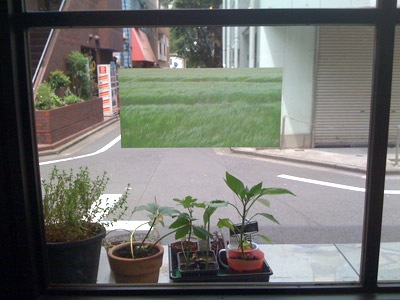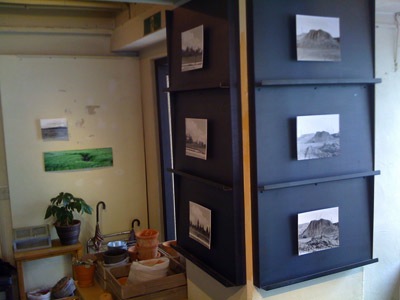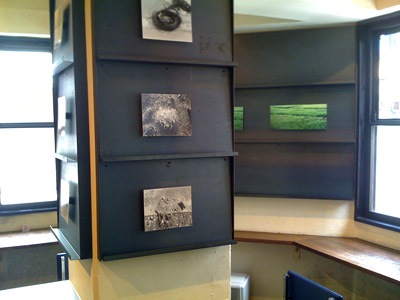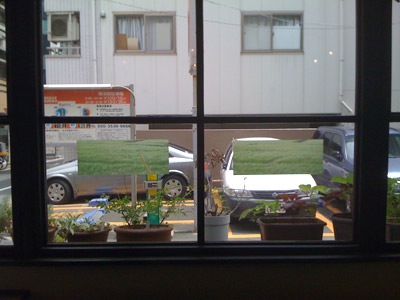
Back in early July I had the great pleasure of having my friend Julie Forgues — artist and professor of photography — come visit for a few weeks, and during that time we had an exhibition for a project of hers, “Land(in)formation,” at Cafe Pause. She introduced the project during that month’s PauseTalk (Vol. 33), and I’ve included here an artist statement and project description, along with the photos, that should help explain the idea behind the show.
She already has an idea for a follow-up for next year, which will expand on what was shown this year, and create an even stronger effect on the space — I’m really looking forward to hosting it at the cafe come next summer.



ARTIST STATEMENT
Time is captured by the film that I set in movement. I set a limit, I establish a precise time, I provide a season. Past, immediately recorded, forms a ghostly spaces of the, what was, what will never be, what I remember. Here and now, light, silver crystals and moment engage in a dance of the instant. And yet, it is past. Only shadowy spaces will reveal themselves on the surface. These spaces are only shadows that appear, here and there, reminding me of the objects/subjects of the past. This alteration of reality transports and grants me stories. I look at them, I remember them, I listen to them, I feel them. They will guide me towards another place that I wish to visit, but that only exists by the shadows revealed by the silver crystals dance in the image. Finally, they will live in the present. I expose them for the other. I am only a builder of images / memories / past stories. On a plate, I hold a portion of one of these frail landscapes, filled with tenderness and memories. I can only offer it its past …I can only offer it to the other.
In short, my photographic landscapes are stories of the past that must never fade out. With these images, I want to banish the boundaries between spectator/nature without entrenching on this land that already has multiple scars. I want to show the silent landscape; the silence that edifies its force. With these deafen landscapes, stories and memories bustle and provoke landmarks. The then represented landscapes then show themselves differently than their own physical nature.
PROJECT DESCRIPTION
The landscape I photograph and the land in which I live in are both culturally significant, as is the way I relate to them, as habitat and as photographer. If I can say that nature & culture = landscape and that landscape photography is part of cultural representations, then I can begin a dialogue between photography and landscape. With the medium format camera in hand, taking photographs of man-altered land and making no alterations to the negatives, I think of myself as a landscape photographer. However, am I really? Are the equipment (medium format camera), the subject (the land) and the context (art) sufficient for me to call myself a landscape photographer? Before, my artistic demeanour was all about the feminine. As time passed, I amplified my investigations of landscape photography. Subsequently, the feminine became secondary in my artistic work and landscapes became my primary subject, but were it really? Am I only using a different language – landscape photography – to talk about the feminine? I realise that taking part in what seems to be a male oriented style of photography is more, shall I say, of a feminist stand, than orienting my work specifically towards the feminine. But is it really?
For the past 7 years, I’ve been searching for these answers. For my – yet to be completed- PhD studies, I’ve noticed and researched the fact that rarely do Canadian woman use the “modernist straight photography” style when photographing landscapes. But I do! What does that make of the practice of my theories or the theories of my practice. To answer these questions I have to continue to live, look, experience, emerge, capture, edit, reveal and present these landscapes on a “plateau” of dancing silver crystals.
![Jean Snow [.net]](http://www.jeansnow.net/wp-content/uploads/2024/04/js_logo_dark.gif)